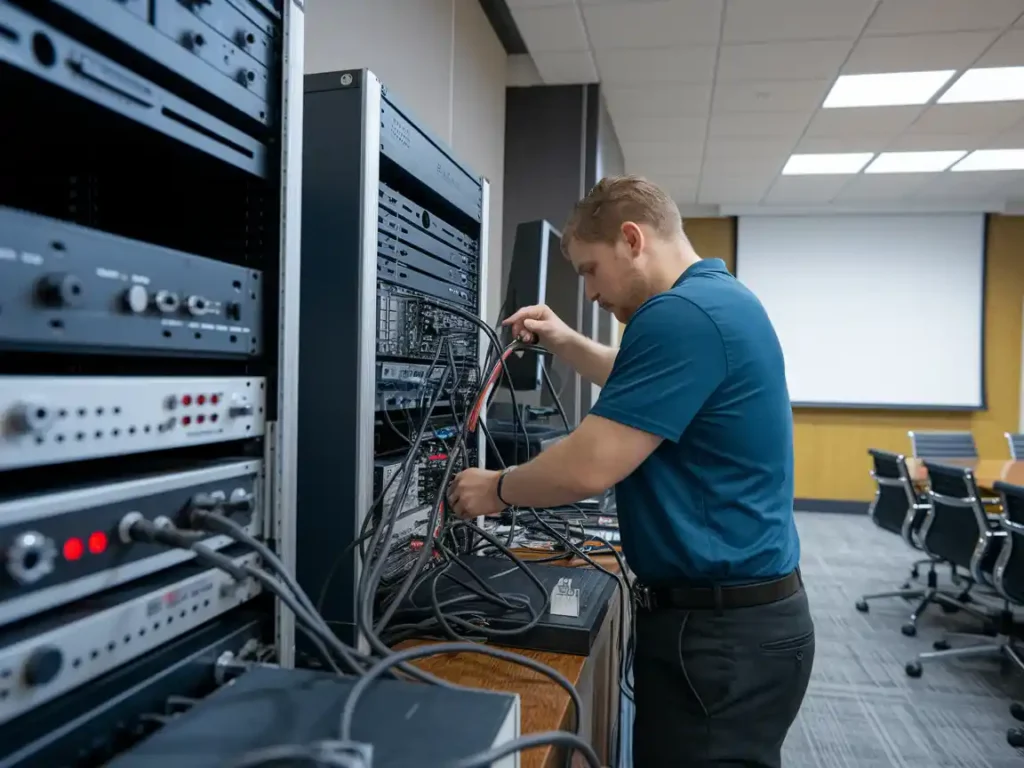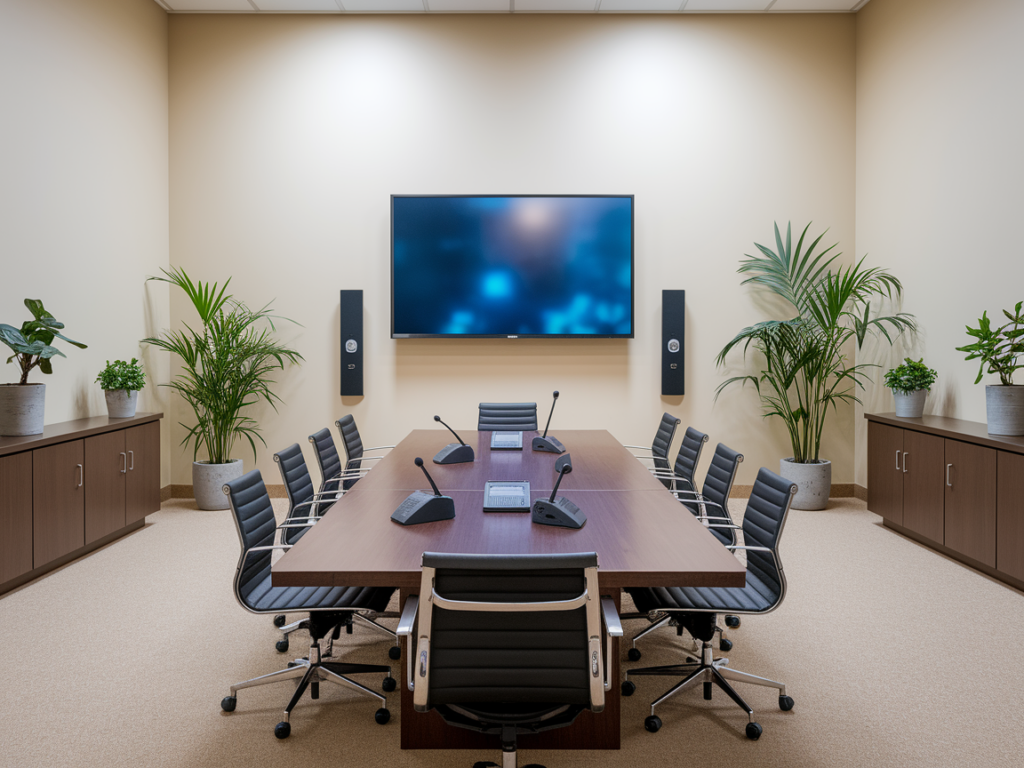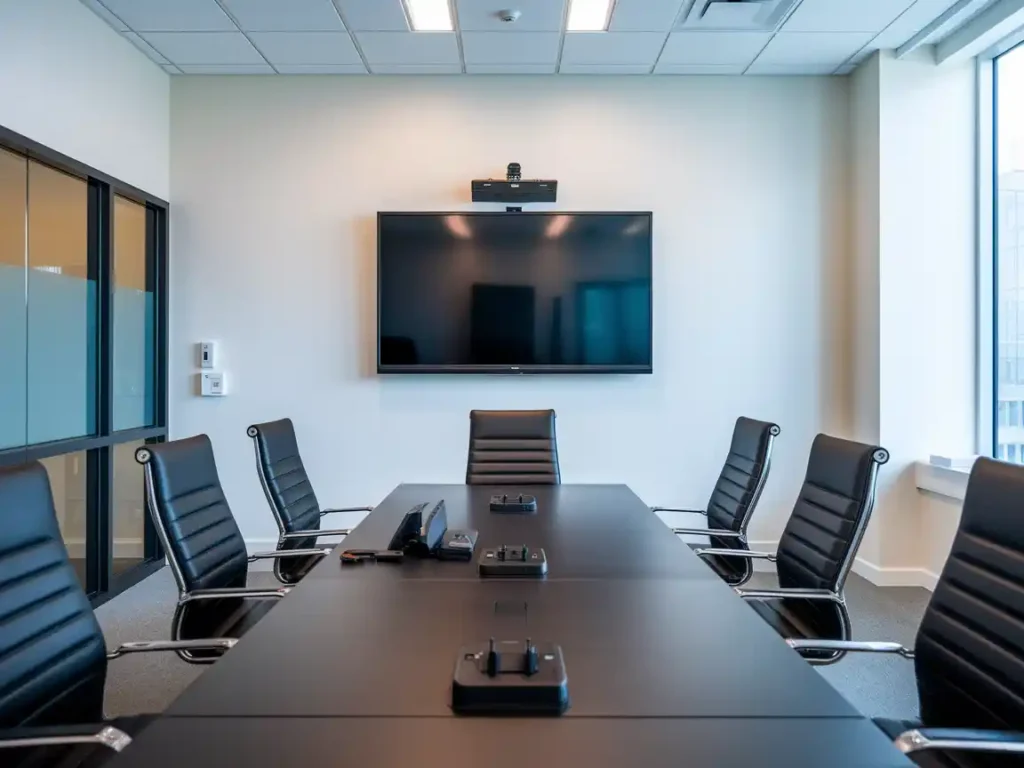Key AV Maintenance Tips to Maintain Long-Term Performance
Your professional audio-visual equipment is a capital investment. Its purpose is the facilitation of communication and, hence, successful experiences. Regular maintenance can add to the overall life expectancy and prevent expensive repair jobs. The following article shares essential maintenance tips for your AV systems, focusing on the more critical elements like PTZ cameras, various types of microphones, gooseneck, boundary, ceiling wireless, HDMI splitters, switchers, and others.
1. Clean Regularly: The First Defense
- Dust, dirt, and grime are bad for electronics. Regular cleaning prevents overheating, ensures proper ventilation, and maintains optimal image and sound quality.
- Displays: Use a soft, lint-free microfiber cloth to wipe screens. Do not use harsh chemicals. Use a dampened cloth with distilled water to clean stubborn smudges.
- Projectors: Use a lens cloth to clean lenses. Regularly dust or replace filters according to the manufacturer’s instructions.
- Audio Equipment: Wipe the speakers, microphones, and control surfaces with a soft cloth. Use compressed air for grilles, ports, and microphone diaphragms.
- Microphones: Gently clean microphone bodies with a soft cloth. Use compressed air for capsules. Wireless microphone battery compartments and connections require extra care.
- PTZ Cameras: Clean the housing and lens with a soft, dry cloth. Do not touch the lens. Ensure it moves smoothly.
- Cables & Connections: Check cables (HDMI, XLR, power) for signs of damage & loose connections. Use compressed air for ports.
- HDMI Splitters/Switchers: Clean the casing. Ventilate correctly. Inhibit corrosion: clean connectors often
- Equipment Racks: Vacuum dust from all surfaces, paying particular attention to ventilation openings.
2. Ventilation & Temperature: Overheating Prevention:
- Overheating drastically shortens equipment lifespan. Ventilate appropriately.
- Equipment Racks: Avoid overcrowding the rack. Rack-mounted fans may be used. Use blank panels for airflow direction.
- Room Temperature: Keep it consistent and comfortable. Avoid extreme temperatures.
- Fans & Vents: Check fan functionality and clean vents on all devices.
3. Software & Firmware Updates: Peak Performance
- Update software and firmware for optimal performance, security, and compatibility, especially for PTZ cameras and switchers.
- Check Regularly: Check the manufacturers’ websites for updates.
- Schedule Updates: Update during off-peak hours.
- Document Updates: Keep a record of all updates.
4. Cable Management: Organization and Efficiency:
- Proper cable management prevents damage, improves airflow, and simplifies troubleshooting.
- Organize Cables: Using ties, clips, or raceways.
- Label Cables: Label clearly on both ends.
- Avoid Stress: Avoid bending or twisting cables too much.
5. Regular Inspections & Testing: Proactive Maintenance:
- Regular inspections identify problems early.
- Visual Inspections: Check all equipment for damage, wear, or loose connections.
- Audio/Video Tests: Audio and video testing of microphone sensitivity, camera functionality, and signal distribution.
- System Performance Checks: Monitor signal strength, latency, and network connectivity.
6. Professional Maintenance: Expertise and Specialized Tools:
- Professional maintenance should be done annually or more often, depending on usage.
- Trained Technicians: Professionals diagnose and repair complex issues.
- Preventative Maintenance: Professionals address potential problems before they escalate.
- System Optimization: Professionals optimize system performance and integration.
7. Documentation & Record Keeping: Essential for Troubleshooting:
- Accurate documentation is required for troubleshooting and upgrades.
- System Diagrams: Detailed diagrams of connections and equipment locations.
- Inventory of Equipment: Maintain an inventory with model numbers, serial numbers, and warranty information.
- Maintenance Logs: Keep a record of all maintenance activity and adjustments.
8. Power Protection: Safeguarding Your Investment:
- Protect equipment from power surges and outages.
- Surge Protectors: Utilize high quality surge protectors.
- UPS: Consider a UPS for critical equipment.
These tips help you extend the life of your AV equipment by a considerable time, ensure maximum performance, and avoid costly downtime. Maintenance, therefore, forms an essential investment in the future health of your AV system.


